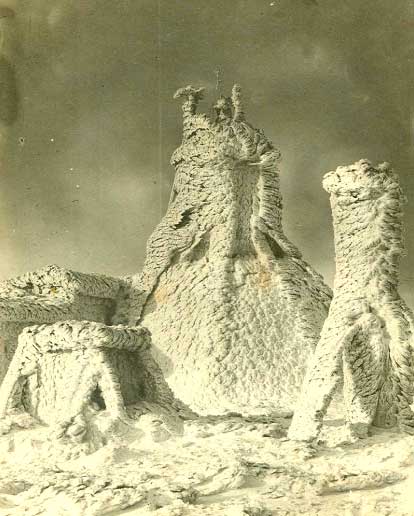Ben Nevis Climate
Ben Nevis's altitude, maritime location and topography frequently lead to poor weather conditions, which can pose a danger to ill-equipped and unwary walkers.
According to the observations carried out at the summit observatory from 1883 - 1904, hill fog was present on the summit for almost 80% of the time between November and January, and 55% of the time in May and June.
The average winter temperature was around -5 °C, and the mean monthly temperature for the year was -0.5 °C. In an average year the summit sees 261 gales and receives 4,350 millimetres (171 inches) of rainfall, compared to only 2,050 millimetres (81 inches) in nearby Fort William and about 600 millimetres (24 inches) in Inverness and London. Rainfall on Ben Nevis is about twice as high in the winter as it is in the spring and summer.
Snow can be found on the mountain almost all year round, particularly in the gullies of the north face - with the higher reaches of Observatory Gully holding snow until September most years and sometimes until the new snows of the following season.
In the Journal of the Scottish Meteorological Society for the year 1890, Mr R. C. Mossman gives an account of the occurrences of silver thaw at Ben Nevis Observatory.

"The phenomenon of silver thaw, or rain falling when the air was below freezing point, and congealing when it fell, was of somewhat common occurrence at Ben Nevis Observatory. The phenomenon points to an inversion of temperature at the time, so that the temperature on the hill top was considerably lower than at higher altitudes. ... A prolonged fall of silver thaw occasioned considerable inconvenience to the observers. Outside objects became covered with several inches of solid uncrystallised ice, through which their original outline could be but faintly distinguished. The chimneys of the Observatory became choked with ice. ... The rain froze on the observers' coats, gloves, and even on their faces, and thus the taking of outside observations was very disagreeable.
Silver thaw was almost wholly confined to the winter months. Nearly all the cases occurred from November to March. It had not been observed in July, and was rare during the summer, owing doubtless to the high temperature prevailing at this season."
